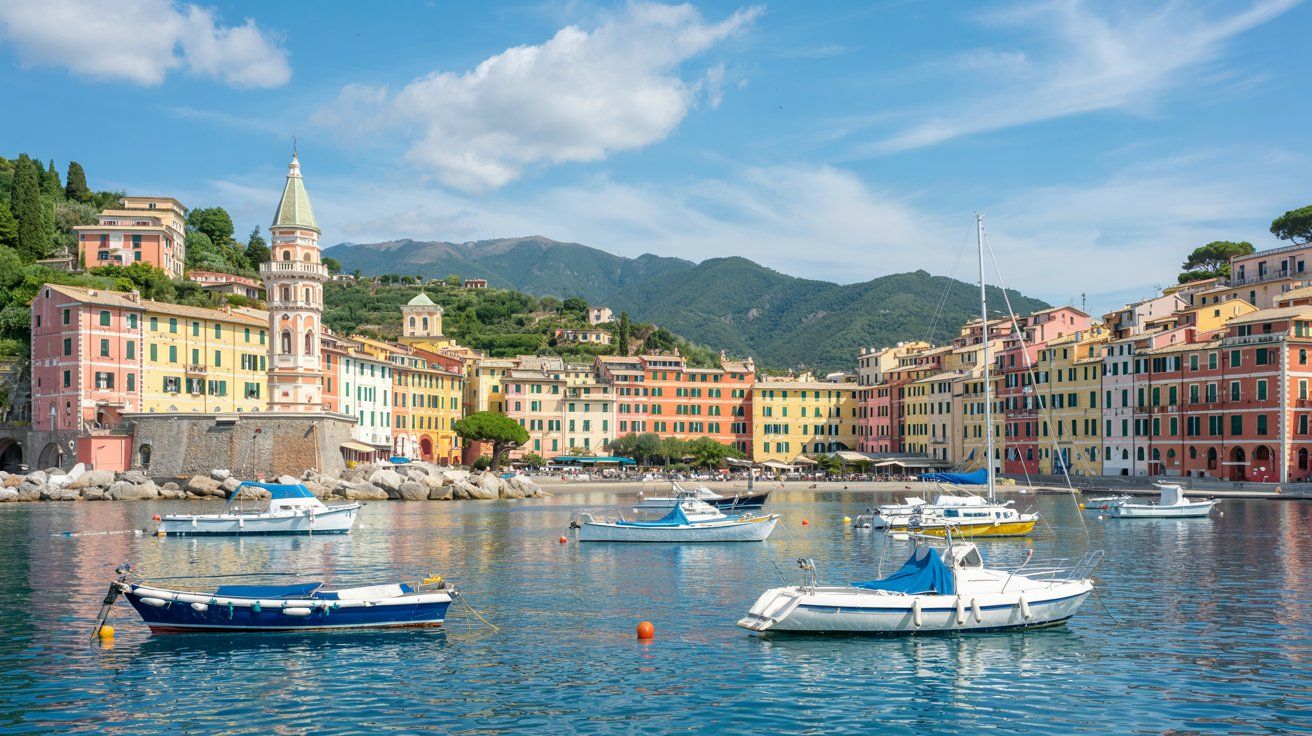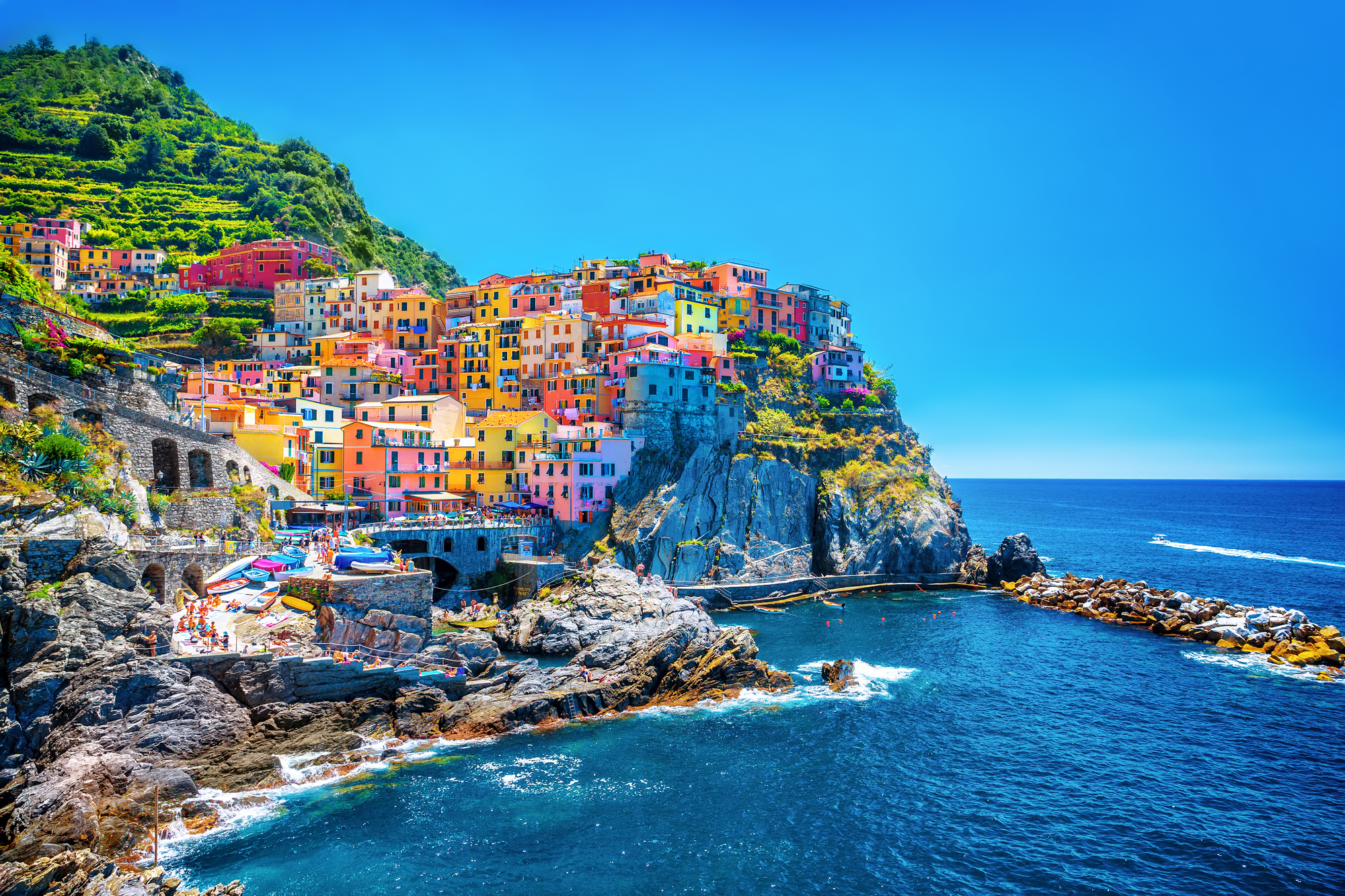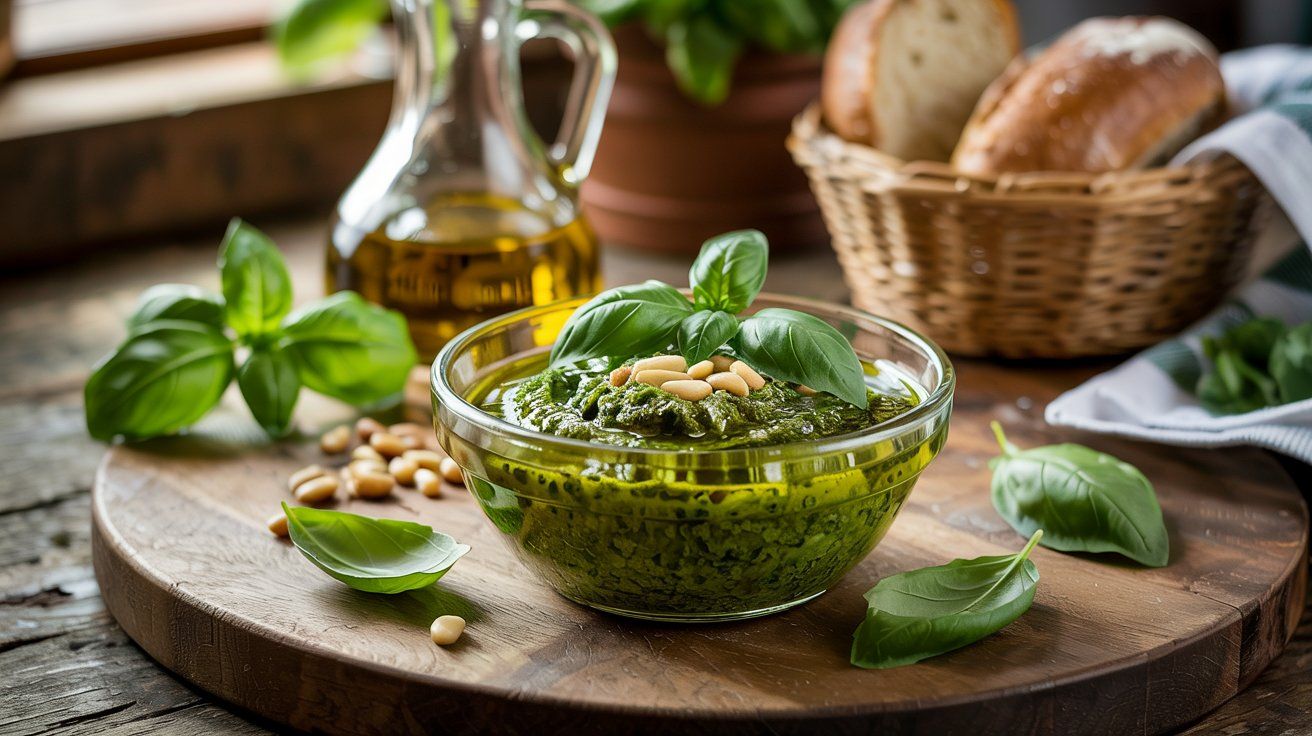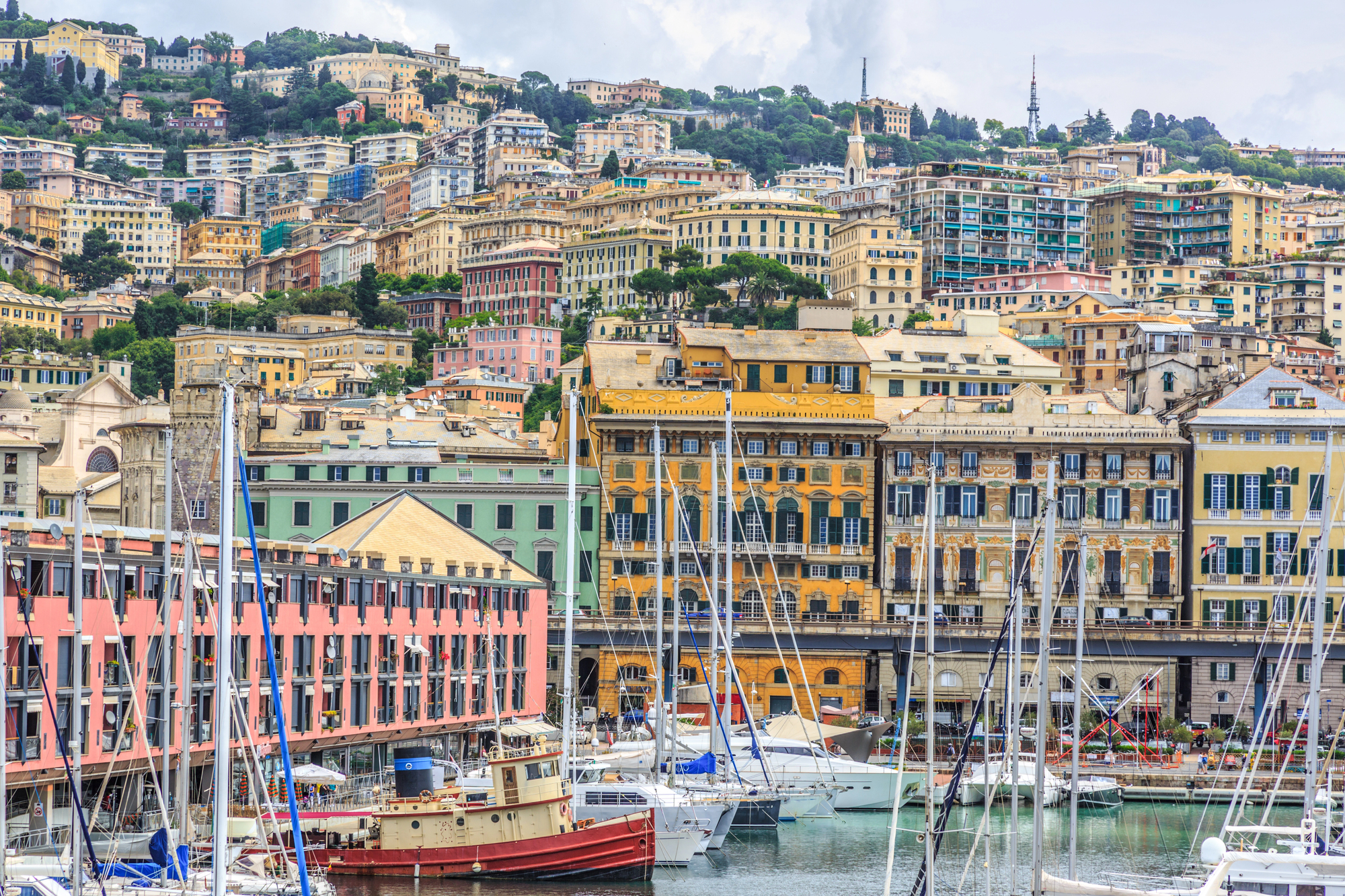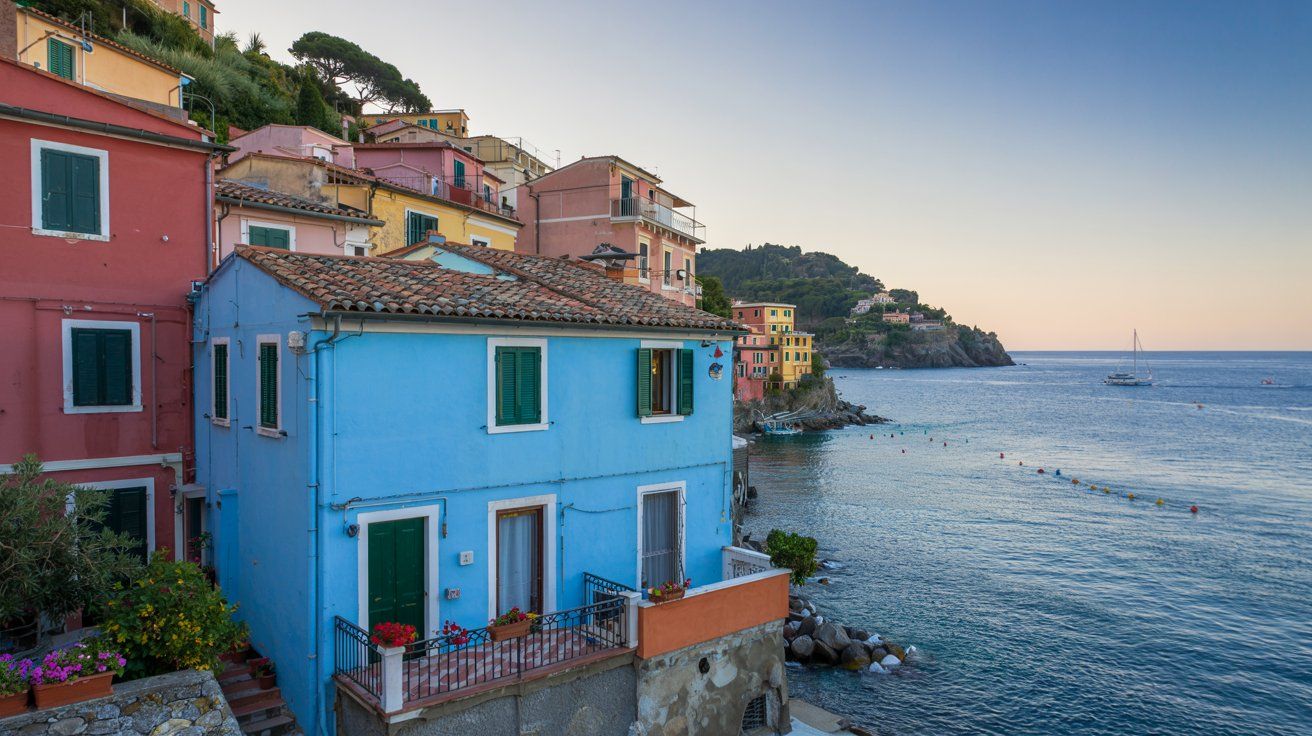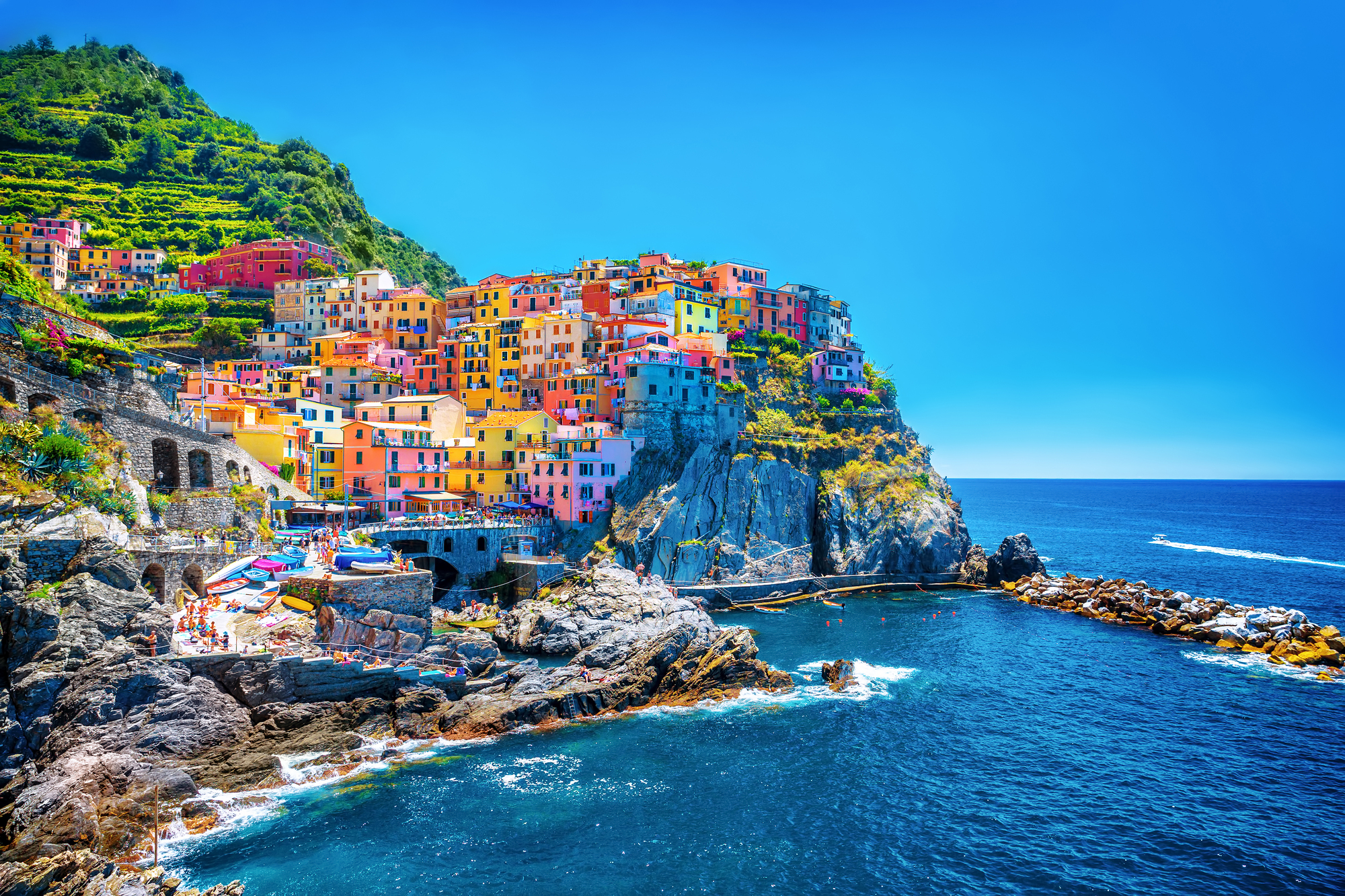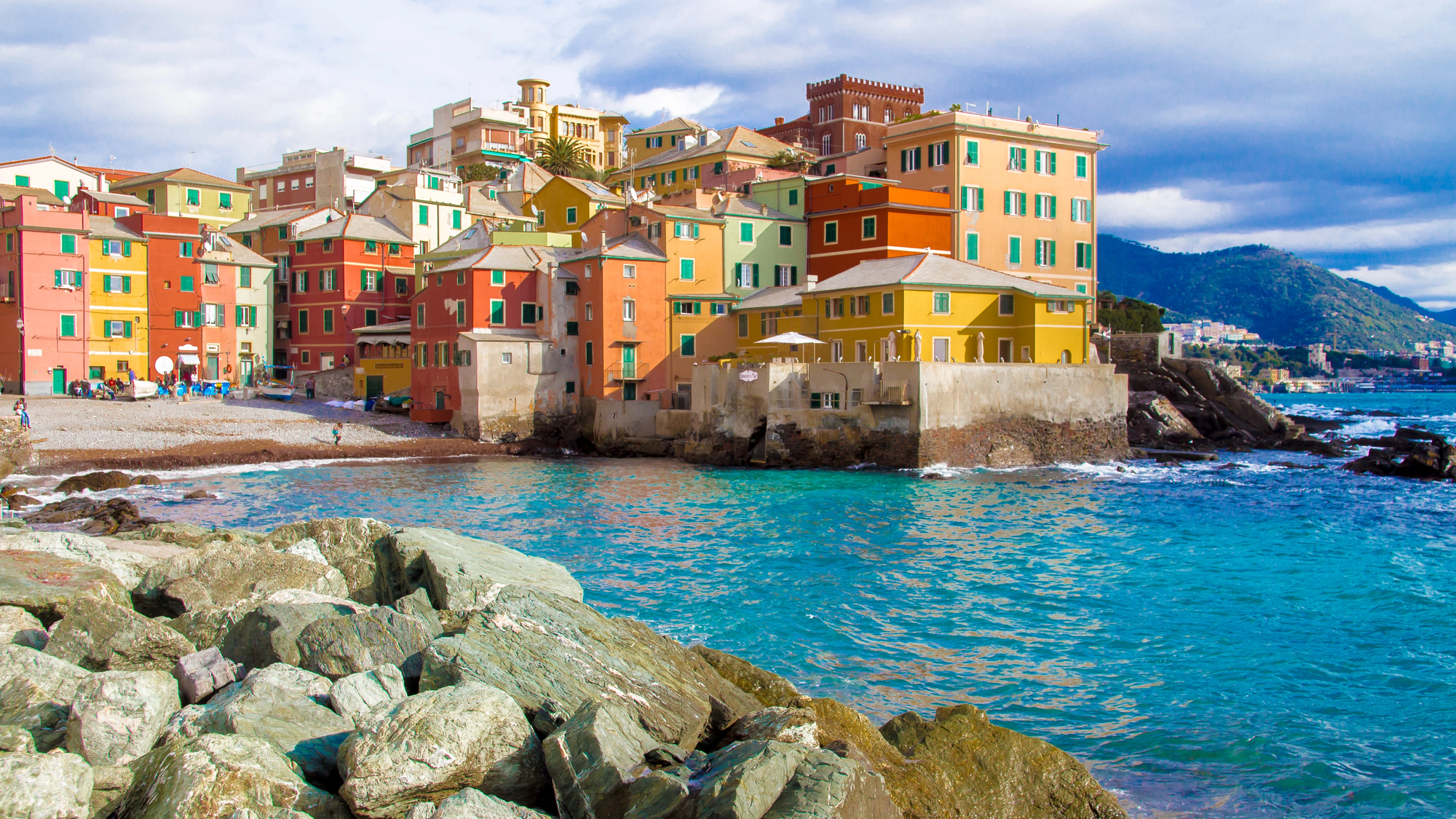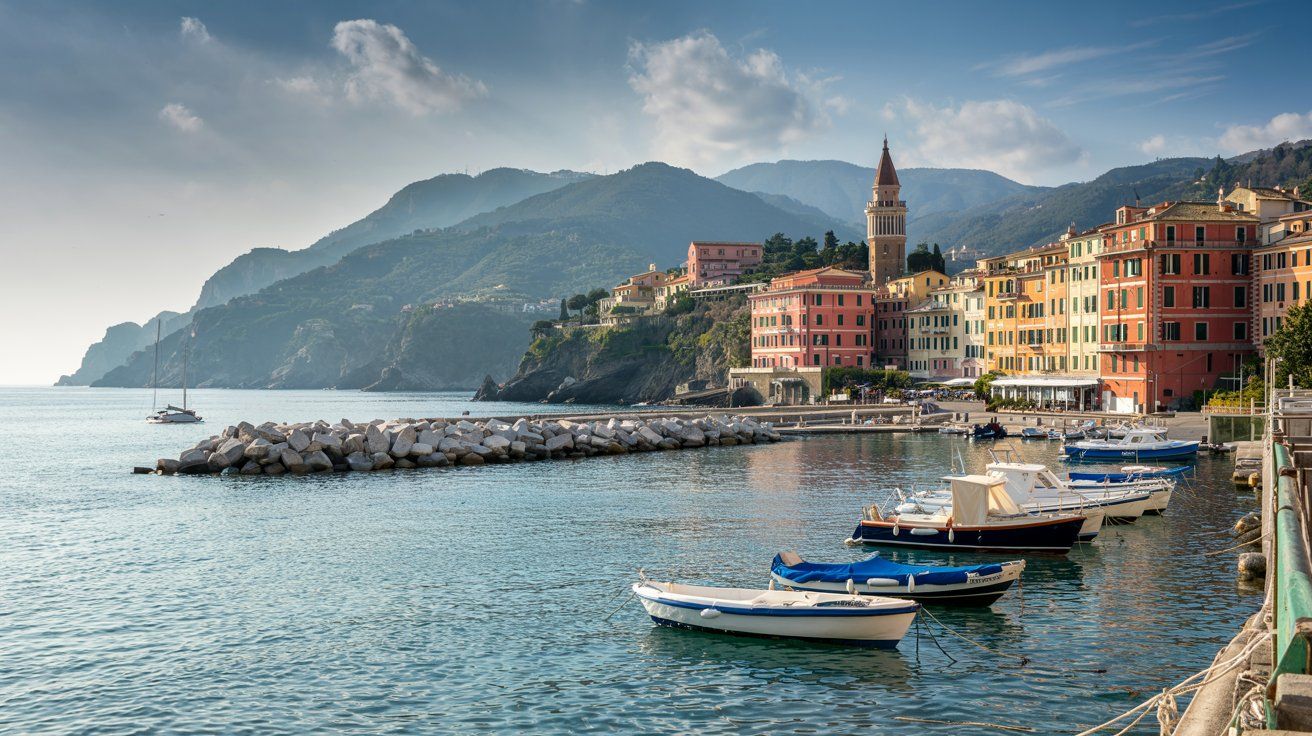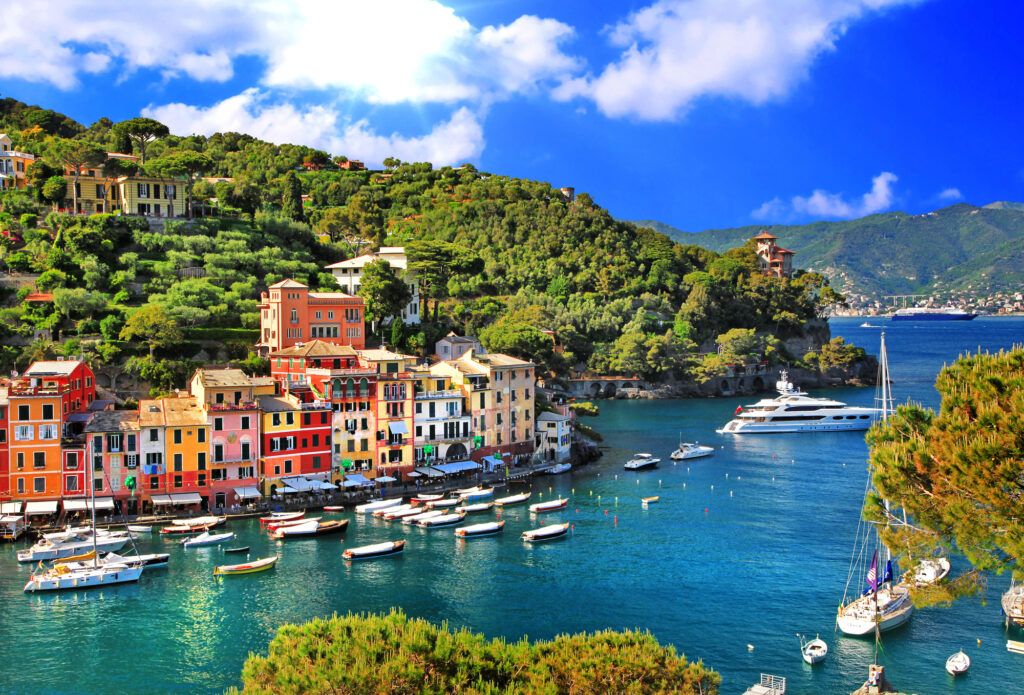Planning time on the Italian Riviera in early autumn feels like a sweet spot—coastal scenery, small-town life, and food traditions all without the peak summer crowds. You get to enjoy warm weather and open trails, but with a little more breathing room. This week, you’ll find plenty of chances to soak up the landscape and the rhythms of Ligurian life.
You’ll wander between seaside paths, historic sites, and quiet harbors at your own pace. Each activity reveals something different—medieval villages, working fishing towns, and that unique Riviera vibe you can’t quite pin down. There’s a lot to take in, and it’s never dull.
Find available hotels and vacation homes instantly. No fees, best rates guaranteed!
Check Availability Now
1) Hike the Cinque Terre trails for breathtaking coastal views
You can walk between the five villages—Monterosso, Vernazza, Corniglia, Manarola, and Riomaggiore—on a network of marked trails. The Sentiero Azzurro is the classic: 12 kilometers along the coast, with constant sea views and vineyards clinging to the cliffs.
Some trail sections close for maintenance or safety, so check before you head out. If you’re not into crowds, try the steeper inland paths—they’re quieter and the views are even bigger.
Spring and early fall usually bring the best weather for hiking—mild and clear. Summer can get hot and crowded, so shorter walks might be more appealing then. In September and October, you still get good light and stable conditions.
You’ll need a Cinque Terre Trekking Card for some trails; buy it at park offices or train stations. Bring water, sturdy shoes, and expect plenty of uneven stone steps.
2) Explore Portofino’s harbor and luxury boutiques
Portofino’s harbor hits you with its compact charm right away. Fishing boats and yachts sit side by side, showing off the village’s mix of tradition and glamour. You can stroll the waterfront in less than ten minutes.
Behind the harbor, narrow streets are lined with shops—high-end clothes, jewelry, and accessories everywhere. Browsing here feels more like people-watching than actual shopping, unless you’re ready to splurge.
Grab a coffee at a café facing the water and just watch the steady shuffle of visitors and locals. The mood stays laid-back, never quite as busy as the bigger Riviera towns.
If you want a breather, walk toward the harbor’s edges. The crowds thin out and you get better views of those iconic painted buildings. Best Things to Do in Portofino Italy: Ultimate 2025 Guide has more ideas if you’re curious.
Popping into boutiques won’t take long, but it gives you a real sense of Portofino’s blend of wealth and history in such a tiny space.
3) Visit the Abbey of San Fruttuoso by boat
The Abbey of San Fruttuoso is only reachable by sea or on foot, and for most people, the boat’s the way to go. Ferries run from Camogli, Portofino, and Santa Margherita Ligure, taking anywhere from 20 to 45 minutes.
The abbey sits tucked in a cove inside Portofino Regional Park. Its stone arches and quiet beach feel worlds away from the busier towns. The site’s roots go back to the 10th century, though most of what you see dates from the 12th.
When you step off the boat, you’re right on the beach in front of the abbey. You can wander the monastery, check out the small museum, or just take in the view. There’s also the Christ of the Abyss statue underwater nearby.
Weather can mess with boat schedules, especially if the sea gets rough. Double-check the timetable and keep your plans flexible. This guide to visiting San Fruttuoso Abbey has more details.
4) Taste authentic Ligurian pesto in local trattorias
Ligurian pesto is the real deal—fresh basil, garlic, pine nuts, olive oil, Parmesan, and Pecorino. Most trattorias serve it with trofie pasta, those little twisted noodles that catch every bit of sauce.
You’ll notice the difference in ingredients right away. Ligurian basil is milder, and the local olive oil brings its own flavor. In Genoa, family-run restaurants stick to old-school recipes, sometimes pairing pesto with trenette pasta or tossing in potatoes and green beans.
If you’re interested in the backstory, check out the culinary heritage of Pesto alla Genovese. Or, for a wider look at food here, try guides to traditional Ligurian foods.
Trattorias vary—some are all about authenticity, others tweak things for tourists. Try a few places to get a sense of how pesto changes from town to town.
5) Walk the colorful streets of Vernazza village
Vernazza greets you right off the train with Via Roma, its main street running straight to the harbor. Cafés, gelato shops, and little groceries line the way, and locals still do their daily shopping here. The pace feels slower than in Monterosso.
Narrow alleys branch off the main road, climbing between tall houses in faded pinks, yellows, and oranges. You’ll see laundry strung overhead—honestly, it’s a bit like stepping into a postcard.
The street opens onto the harbor, where boats bob and fishermen work their nets. If you want a better view, climb up toward the Doria Castle tower—small effort, big payoff.
Vernazza draws plenty of visitors, but mornings and late afternoons are usually quieter. For more ideas, this guide to things to do in Vernazza is worth a look.
6) Take a boat tour along the Riviera coastline
Seeing the Riviera from the water changes everything. Harbors like Monterosso, Rapallo, and Santa Margherita have regular departures, with options from simple ferries to private charters.
A boat tour gives you front-row views of pastel villages, terraced vineyards, and jagged cliffs—no crowds, just scenery. The stretch between Cinque Terre and Portofino is a favorite, partly because so many coves aren’t reachable by road. Guides usually share local stories, which adds a nice touch.
Evening cruises are a thing, and watching the villages light up from the water is pretty magical. Some tours stop for a swim in calm bays. If you’re up for it, book a day trip that hops between towns or heads toward the Gulf of La Spezia.
Elegant resorts, charming apartments, and vacation rentals with immediate confirmation. From Portofino to Cinque Terre, discover the most beautiful coastal towns of Liguria!
See Available Properties
Weather matters here—autumn seas can get choppy, so check the forecast before you book. Reviews of Italian Riviera boat rides and cruises help with planning.
7) Discover the medieval town of Dolceacqua
To get to Dolceacqua, you follow the valley road inland from Ventimiglia. The village sits on the Nervia River, surrounded by hills thick with olive trees and vineyards. You can see most of it on foot in a couple of hours.
The 15th-century Doria Castle towers above the old town. Climb up for valley views—worth the effort. Sometimes the castle hosts exhibitions or small events.
The Ponte Vecchio, a 15th-century stone bridge painted by Monet, links the medieval quarter to the newer side. Its narrow arch is one of Liguria’s most photographed spots.
Wander the steep, shaded alleys lined with old stone houses. The streets can be uneven, so good shoes help. Dolceacqua feels more authentic than the coastal towns, with fewer tourist shops and a quieter vibe.
Food and wine are big here. Try Rossese di Dolceacqua, the local red, in a small enoteca. Many restaurants serve rabbit with olives, a classic dish. For more ideas, check this guide to things to do in Dolceacqua.
8) Relax on the beaches of Monterosso al Mare
Monterosso al Mare has the biggest sandy beach in Cinque Terre, right in town and just a quick walk from the train. The waterfront’s split between public and private sections—spread your towel for free or rent a chair and umbrella if you want more comfort.
In early October, the sea’s still swimmable, though mornings might feel chilly. Water’s usually clear, but if the weather turns, waves can pick up. Bring light layers so you can adjust.
Families like Monterosso for the sand, which is easier on kids than the pebbly beaches elsewhere. For fewer people, head to Fegina Beach at the edge of town.
You’ll find cafés and bakeries close to the promenade, making it easy to grab focaccia or coffee without leaving the water for long. That convenience makes a lazy beach day even better.
9) Visit the historic Castello Brown in Portofino
You reach Castello Brown by hiking uphill for about ten minutes from Portofino’s harbor. The shaded path winds through pine trees and offers glimpses of the bay. It’s a bit steep, so wear good shoes.
The castle started as a fortress in the 16th century, then became a private home, and now it’s a museum. Inside, you’ll see photos and memorabilia from Portofino’s past.
The terrace is the real highlight, overlooking the harbor and the Gulf of Tigullio. The view of colorful houses and coastline is hard to beat.
You can stroll the well-kept gardens and find quiet corners to sit. Sometimes there are exhibitions or cultural events, which add a little extra. Even if you skip the museum, the walk up is worth it for the scenery.
For visiting hours and events, check the Castello Brown website. Traveler tips and practical info are also on Tripadvisor’s Castello Brown page.
10) Enjoy fresh seafood at a seaside restaurant in Camogli
Camogli’s one of those places where you can still feel the fishing vibe—nets drying, boats bobbing, and seafood that pretty much just left the water. You’ll spot anchovies, mussels, and whatever’s fresh that day, all cooked simply so the fish actually tastes like, well, fish.
Most spots line the waterfront, so you get a front-row seat to the harbor while you eat. It’s relaxed—no fuss, just good food—and you’ll notice locals and travelers mixed together. There’s a range of prices, so you don’t have to stray from the seafront to find something that fits your wallet.
Not sure where to go? Skim through the best seafood restaurants in Camogli or the top-rated local picks. You’ll find everything from family-run trattorias with handwritten menus to places that lean a little more upscale.
Easy booking across stunning accommodations from historic hotels to modern retreats. Pastel-colored buildings and crystal waters create the perfect Mediterranean escape!
Secure Your Italian Getaway
Don’t expect lightning-fast service, especially when the place gets busy. Kitchens usually make things to order, so meals take time. Honestly, that’s part of the charm here—just settle in, breathe the sea air, and let the evening drift by.
Understanding the Italian Riviera in Early Autumn
Early autumn on the Riviera feels different—cooler air, quieter streets, and a shift in what’s on your plate. The rush of summer fades, but there’s still plenty happening if you know where to look.
Weather and Seasonal Highlights
Days stay mild, evenings get crisp. Usually, you’re looking at 18°C to 23°C (64°F to 73°F) during the day, dipping to around 14°C (57°F) at night. Bring a light jacket or a sweater—trust me, you’ll want it after sunset.
The sea’s still warm enough for a swim, especially in those little coves that hold the heat—think 20°C (68°F). Beaches clear out compared to August, so you’ve got more space to stretch out. If you’re into hiking, the trails in Cinque Terre or Portofino feel way more doable without that heavy summer sun.
Rain shows up a bit more often, but showers usually pass quickly. Toss a small umbrella or rain jacket in your bag, just in case. After the rain, skies tend to look sharper, and the coastline pops with color—kind of a photographer’s dream.
Markets start filling up with autumn crops—chestnuts, mushrooms, grapes. Local dishes get a little heartier, too; you’ll spot new pasta sauces and baked specialties showing up on menus.
Local Festivals and Events
Late September and early October bring out the harvest festivals. In Liguria, small towns throw grape harvest parties with wine tastings, local cheeses, and cured meats. You might stumble on chestnut festivals inland—think roasted chestnuts, cakes, and sweets, plus folk music and little craft fairs. It’s a nice peek into local life.
Down by the coast, you could run into food fairs celebrating anchovies or pesto—two absolute classics in Ligurian kitchens. Some events listed on regional travel guides have cooking demos and tastings right in the village square.
There are also religious processions and concerts tucked into old churches. These aren’t huge like the summer festivals, but you get a more genuine vibe. You’ll probably find yourself surrounded by locals, not crowds of tourists.
Travel Tips for a Smooth Italian Riviera Experience
Getting around isn’t tricky, but it does take a bit of planning—trains, boats, buses, they all run on their own timetables. Picking up on local habits helps too, so you don’t end up in an awkward spot.
Transportation Options and Connectivity
Regional trains work best for hopping between towns. Trenitalia links up Genoa, Cinque Terre, La Spezia, and Ventimiglia pretty reliably. Trains usually run on time, but they get crowded, especially during rush hour. Grab your tickets ahead if you can.
Ferries connect spots like Portofino, Santa Margherita Ligure, and Monterosso. Boats give you killer sea views, but they’re at the mercy of the weather. If the sea’s rough, ferries just won’t run, so always have a train as your backup.
Local buses fill in the gaps, especially for villages off the train line. They slow down on Sundays and in the evenings. Always stamp your ticket before you sit down—ticket checks happen more often than you’d think.
Driving gives you freedom, but parking’s a headache in these little towns. It’s pricey, and you’ll need permits in a lot of places. If you rent a car, save it for exploring the countryside, not for bouncing between coastal towns.
Cultural Etiquette and Visitor Guidance
Italians really appreciate courtesy in public spaces. Just a quick “buongiorno” or “buonasera” when you walk into a shop or restaurant goes a long way—skipping it can come off as a bit rude.
Dress codes, especially at religious sites, are stricter than you might expect. Cover your shoulders and knees if you’re heading into a church or monastery. Honestly, tossing a scarf or shawl in your bag makes it simple.
Meals run late here. Most restaurants don’t even think about dinner service before 7:30 p.m., so showing up early and asking for food might get you some confused looks.
Tipping? Not a big deal. If you liked the service, you can round up the bill, but nobody’s going to chase you down if you don’t. Service charges often sneak onto the receipt, so maybe double-check before you add anything extra.
Italians like to keep things quiet at night, especially in those echoey, narrow streets. If you’re out late, try to keep your voice down—it’s just considerate.
From seaside palazzos to hillside villas, find your perfect stay along this stunning stretch of Mediterranean coastline. Instant booking with best price guarantee!
Browse Accommodations Now

